| 21 June |
• yesterday • tomorrow |
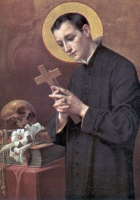
• Aluigi Gonzaga
• Lewis Gonzaga
• Luigi Gonzaga
Born to the Italian nobility who grew up in a castle, the son of Ferdinand Gonzaga, a prince in the Holy Roman Emperor and a compulsive gambler. Cousin of Saint Rudolph Acquaviva. Trained from age four as a soldier and courtier. Served as a page in the Spanish court. He suffered from kidney disease, which he considered a blessing as it left him bed-ridden with time for prayer. While still a boy himself, he taught catechism to poor boys. He received his First Communion from Saint Charles Borromeo. At age 18, Aloysius signed away his legal claim to his family's lands and title to his brother, and became a Jesuit novice. Spiritual student of Saint Robert Bellarmine. Tended plague victims in Rome, Italy in the outbreak of 1591 during which he caught the disease that killed him at age 23.
9 March 1568 in the family castle of Castiglione delle Stivieri in Montua, Lombardy, Italy
• 20-21 June 1591 at Rome, Italy of plague, fever, and desire to see God
• relics entombed under the altar of Saint Ignatius Church, Rome
• 19 October 1605 Pope Paul V (cultus confirmed)
• 1621 by Pope Gregory XV
31 December 1726 by Pope Benedict XIII
• against sore eyes
• AIDS care-givers
• AIDS patients
• for bodily purity
• Catholic youth
• Jesuit students
• for relief from pestilence
• teenage children, teenagers
• young people
• Castiglione delle Stiviere, Italy
• Valmonte, Italy
• skull
• lilies
• young man in a surplice with a lily and crucifix
There is no more evident sign that anyone is a saint and of the number of the elect, than to see him leading a good life and at the same time a prey to desolation, suffering, and trials. - Saint Aloysius Gonzaga
He who wishes to love God does not truly love Him if he has not an ardent and constant desire to suffer for His sake. - Saint Aloysius Gonzaga
O Holy Mary! My Mother; into thy blessed trust and special custody, and into the bosom of thy mercy, I this day, and every day, and in the hour of my death, commend my soul and body. To thee I commit all my anxieties and sorrows, my life and the end of my life, that by they most holy intercession, and by thy merits, all my actions may be directed and governed by thy will and that of thy Son. - Saint Aloysius Gonzaga
May the comfort and grace of the Holy Spirit be yours for ever, most honored lady. Your letter found me lingering still in this region of the dead, but now I must rouse myself to make my way on to heaven at last, and to praise God for ever in the land of the living; indeed I had hoped that before this time my journey there would have been over. If charity, as Saint Paul says, means "to weep with those who weep and rejoice with those who are glad," then, dearest mother, you shall rejoice exceedingly that God in his grace and his love for you is showing me the path to true happiness, and assuring me that I shall never lose him. Take care above all things, most honored lady, not to insult God's boundless loving kindness; you would certainly do this if you mourned as dead one living face to face with God, one whose prayers can bring you in your troubles more powerful aid than they ever could on earth. And our parting will not be for long; we shall see each other again in heaven; we shall be united with our Savior; there we shall praise him with heart and soul, sing of his mercies for ever, and enjoy eternal happiness. - from a letter to his mother by Saint Aloysius Gonzaga
https://catholicsaints.info/saint-aloysius-gonzaga/
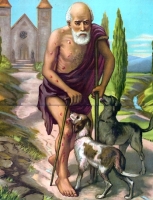
Lazaro
Leper mentioned by Christ in the parable of Lazarus and the rich man in the Gospel of Luke (see below).
The Order of Saint Lazarus was founded in the 12th century to provide nursing for lepers, taking Lazarus as its patron. The knights of the order were lepers, and besides helping their fellow sufferers, they carried out military duties. They founded a hospital for lepers near the northern wall of Jerusalem.
• against leprosy; lepers
• Order of Saint Lazarus
There was a rich man who dressed in purple garments and fine linen and dined sumptuously each day. And lying at his door was a poor man named Lazarus, covered with sores, whoo would gladly have eaten his fill of the scraps that fell from the rich man's table. Dogs even used to come and lick his sores. When the poor man died, he was carried away by angels to the bosom of Abraham. The rich man also died and was buried, and from the netherworld, where he was in torment, he raised his eyes and saw Abraham far off and Lazarus at his side. And he cried out, 'Father Abraham, have pity on me. Send Lazarus to dip the tip of his finger in water and cool my tongue, for I am suffering torment in these flames.' Abraham replied, 'My child, remember that you received what was good during your lifetime while Lazarus likewise received what was bad; but now he is comforted here, whereas you are tormented. Moreover, between us and you a great chasm is established to prevent anyone from crossing who might wish to go from our side to yours or from your side to ours.' He said, 'Then I beg you, father, send him to my father's house, for I have five brothers, so that he may warn them, lest they too come to this place of torment.' But Abraham replied, 'They have Moses and the prophets. Let them listen to them.' He said, 'Oh no, father Abraham, but if someone from the dead goes to them, they will repent.' Then Abraham said, 'If they will not listen to Moses and the prophets, neither will they be persuaded if someone should rise from the dead.'" - Gospel of Luke, 16:19-31, New American Bible
https://catholicsaints.info/saint-lazarus/
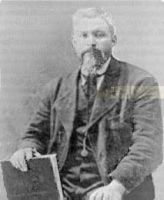
21 May as one of the Martyrs of the Mexican Revolution
Seminarian at Guadalajara, Mexico. Parish priest at Zapotlanejo, Jalisco, Mexico in 1900. Strong and gentle father to his flock, he refused to abandon his parish during the persecutions of the Church by the government; he went into hiding, and ministered covertly to his parishioners. The mayor of Zapotlanjejo, Jose Orozco, was virulently anti-Catholic, and offered a reward for the capture of any priest. Father Jose was betrayed for this reward, and arrested; his Judas was Nemesio Bermejo, an ex-seminarian who lived with Flores.
Flores was offered his freedom if he would accept the anti-Church Calles government; he declined. Orozco turned the Zapotlanejo rectory into a jail, threw Flores into it, gave him no food or water for three days, played music outside the gaol so he could not sleep, and repeatedly offered him freedom in exchange for cooperation; Father Jose declined.
On the night he died, Jose was taken to a nearby cemetery, and tortured by being repeatedly hanged in a tree, but being lowered before he died. One of the soldiers, who had been baptized by Father Flores, refused to participate in the torture; the others shot him. They then took the padre's few possessions and murdered him. The squad tried to shoot him, but their guns would not fire, and the troop's commander, Anastasio Valdivia, cut Flores' throat. Martyr.
28 November 1866 at Teul, Zacatecas, Mexico
throat cut between 1am and 2am on 21 June 1927 in a cemetery near Zapotlanejo, Jalisco, Mexico
21 May 2000 by Pope John Paul II during the Jubilee of Mexico
God knows I am here. This is his will for me. - Saint Jose from his prison cell
https://catholicsaints.info/saint-jose-isabel-flores-varela/
25 October as one of the Forty Martyrs of England and Wales
Lancashire gentleman. Raised Protestant but converted to Catholicism. Converted others, including his father.
Imprisoned at Newgate for his faith, and for refusing to acknowledge the Queen as head of the Church. Did time with Saint John Jones. Tortured and executed by order of Justice Guady for refusing to attend Protestant services. One of the Forty Martyrs of England and Wales.
As part of the paperwork before his execution, he was asked his marital status. John replied he was "both a bachelor and a maid," the latter apparently referring to his job as a servant in the household of the avid Protestant Sir Edmund Heddleston.
1570 at Harrack Hall, Wigan, Lancashire, England
• 21 June 1600 at Southwark, London, England
• his body was chopped up and scattered around Southwark
25 October 1970 by Pope Paul VI
• bachelors
• torture victims
https://catholicsaints.info/saint-john-rigby/
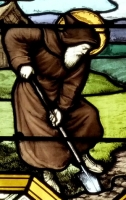
Leofred, Leufroi, Leufroy, Leutfred, Leutfrid, Lieffroy
Born to the nobility of Évreux, France. Brother of Saint Agofredus. Studied at Condat and Chartres in France. Teacher of young boys at Evreux, France. Spiritual student of Saint Sidonius of Saint-Saens. Benedictine hermit at Cailly and at Rouen in France. Founded La Croix-Saint-Ouen abbey (later called Saint-Leufroy in his honour) c.690, and served as its first abbot. Legend says that he used prayer to extinguish a fire that threatened to destroy his monastery.
late 7th century near Évreux, France
• 21 June 738 of natural causes
• miracles reported at his tomb, which became a place of pilgrimage
• relics enshrined in the La Croix-Saint-Ouen monastery church in 851
• relics enshrined in the church of Saint-Leufroy in Thiveryny, Oise, France
https://catholicsaints.info/saint-leutfridus/
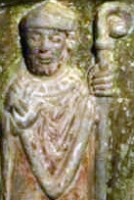
• Raymond of Roda
• Ramon II
Augustinian canon regular at the monastery of Saint-Antonin de Frédélas in Pamiers, France. Prior of the monastery of Saint-Sernin in Toulouse, France. Bishop of Barbastro, Aragon, Spain in 1104. Very active in his diocese, constantly travelling to visit parishes, caring for his priests, encouraging the faith in the laity, living simply and giving charity lavishly. Exiled by force from 1116 to 1119 for preaching aginst the use of Christian armies against the foes of Christendom.
in Durban-sur-Arize, diocese of Toulouse, France
• 1126 at Barbastro, Spain of natural causes
• buried in objects from his bishopric preserved in Roda de Isábena, Huesca, Spain
• city of Barbastro, Spain
• diocese of Barbastro, Spain
https://catholicsaints.info/saint-raymond-of-barbastro/
Born to the nobility. During a feast, Nicholas became drunk, then beligerent, and then beat up a guest. Knowing the punishment that would follow, he hid and when he thought he had been found, he pleaded for mercy and promised repentance; he then looked up to see that he had been found by a vision of Saint Norbert of Xanten who protected Nicholas by wrapping him in his cloak. Accepting the vision, Nicholas joined the Norbertines and made his vows in 1628. Canon on the Stahov monastery just outside Prague, Bohemia (in the modern Czech Republic). Novice master. Noted preacher and orator who would speak at two churches each day to large crowds. Prior of his monastery. Developed a great devotion to the Blessed Virgin Mary. Dean of the convent at Doksany in 1649.
early 17th century Bohemia (in the area of modern Czech Republic)
1654 of natural causes
https://catholicsaints.info/blessed-nicholas-plutzer/
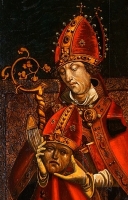
• Albano di Magonza
• Albinus of Mainz
Priest. Worked with Saint Ursus. The two fled Naxos, Greece to Naples, Italy to escape Arian persecution. Saint Ambrose of Milan sent them on to Gaul and Germany to evangelize the pagans there. Ursus was killed on the way, but Alban continued to Mainz, Germany. He became famous as a preacher, converting many, and opposing Arianism. Martyred by invading Vandals.
Greek or Albanian (sources vary)
• c.400 by pagan Vandals at Hanum, Germany
• his body was beheaded post-mortem
• against epilepsy; epileptics
• against gravel or kidney stones
• against hernia; hernia victims
holding his severed head
https://catholicsaints.info/saint-alban-of-mainz/
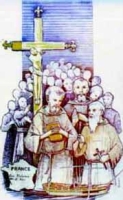
Priest in the diocese of Poitiers, France. Imprisoned on a ship in the harbor of Rochefort, France and left to die during the anti-Catholic persecutions of the French Revolution. One of the Martyrs of the Hulks of Rochefort.
10 November 1754 in Ruffec, Charente, France
21 June 1794 aboard the prison ship Deux-Associés, in Rochefort, Charente-Maritime, France
1 October 1995 by Pope John Paul II
https://catholicsaints.info/blessed-jacques-morelle-dupas/
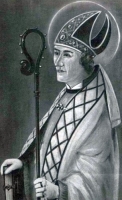
Raoul, Rodolphe, Radulphe, Rudolphe, Radulfo, Rodolfo
Born to the French royal family, the son of the count of Cahors and lord of Turenne. Ralph gave up his worldly position to become a monk in 822. Archbishop of Bourges, France in 840. Founded seven monasteries and worked tirelessly to improve discipline and encourage the faith. Compiled the book Pastoral Instructions to guide the priests of his diocese.
21 June 866 of natural causes
https://catholicsaints.info/saint-ralph-of-bourges/

• Mewan of Brittany
• Mewan of Cornwall
• Maine, Mavenus, Meen, Melanus, Mevan, Mevenno, Mevenus
Followed Saint Samson from Wales to Brittany in the sixth century, accompanied by his godson Saint Austell of Cornwall. Evangelized the Broceliande district. Founded the monastery at Parmpont, Brittany, France that was later named for him.
c.617 of natural causes
https://catholicsaints.info/saint-mewan-of-bretagne/
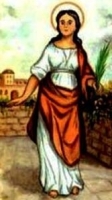
Daughter of Saint Flavian and Saint Dafrosa; sister of Saint Bibiana. Following the martyrdom of her parents during the persecutions of Julian the Apostate, Demetria was arrested with Bibiana; she dropped dead before reaching her cell. Martyr.
• c.363 in Rome, Italy
• relics enshrined in the church of Saint Bibiana in Rome, Italy
https://catholicsaints.info/saint-demetria-of-rome/
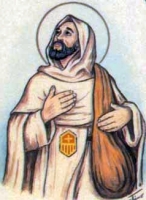
Mercedarian friar at the convent of Saint Eulalia in Seville, Spain.
https://catholicsaints.info/blessed-juan-of-jesus/
Engelmond, Ingelmund
Became a Benedictine monk at a very early age. Priest. Abbot. Missionary to Friesland, working with Saint Willibrord of Echternach.
England
• c.739 at Haarlem, Netherlands
• relics enshrined in Utrecht, Netherlands
https://catholicsaints.info/saint-engelmund/
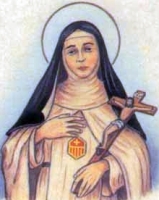
Mercedarian nun, one of the first. Great spiritual teacher to her sisters. Miracle worker.
Barcelona, Spain
1295 at the Mercedarian convent in Barcelona, Spain of natural causes
https://catholicsaints.info/blessed-colagia/
• Suibhne of Armagh
• Suibhne of Cobran
• Suibhne In-Sui
• Suibhney, Suivney, Suibne
Eighth century bishop of Armagh, Ireland for 12 to 15 years (records very).
21 June 730 of natural causes
https://catholicsaints.info/saint-suibhne-the-sage/
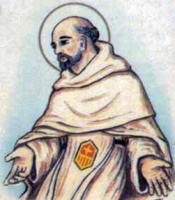
Mercedarian friar and preacher who ransomed Christians enslaved by Muslims in North Africa.
https://catholicsaints.info/blessed-melchiorre-della-pace/
Ursicino
Bishop of Pavia, Italy, from c.183 until his death, serving for 33 years. He led his see during a turbulent period of persecution and growth.
216 of natural causes
https://catholicsaints.info/saint-urciscenus/
Brother of Saint Leutfridus. Holy Cross Benedictine monk. Known throughout Normandy, France, for his holiness.
738 of natural causes
https://catholicsaints.info/saint-agofredus/
Terentius
First century bishop of Iconium. May have been the Terius mentioned by Saint Paul the Apostle in Romans 16:22. Martyr.
https://catholicsaints.info/saint-terence/
Cormac
Sixth century spiritual student of Saint Columba. Appointed abbot of Durrow monastery by Columba.
https://catholicsaints.info/saint-corbmac/
Bishop of Tongres in modern Belgium. Apostle of the Hesbaye district, in Brabant.
https://catholicsaints.info/saint-martin-of-tongres/
Monk at Comacchio near Venice, Italy.
c.820
https://catholicsaints.info/saint-dominic-of-comacchio/
Martyr.
Syracuse, Sicily, date unknown
https://catholicsaints.info/saint-rufinus-of-syracuse/
Martyr.
Syracuse, Sicily, date unknown
https://catholicsaints.info/saint-martia-of-syracuse/
Martyr.
https://catholicsaints.info/saint-apollinaris-of-africa/
Martyr.
https://catholicsaints.info/saint-cyriacus-of-africa/
Three Christians of different backgrounds who were martyred together – Moses, Paphnutius, Thomas
beheaded in Taw, Egypt, date unknown
https://catholicsaints.info/martyrs-of-taw/
• Madonna of the Miracles
• Sillen
• Thomas of Orvieto
• Ursus of Burano
CatholicSaints.Info Portable Edition